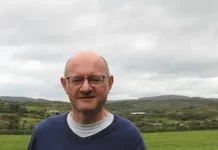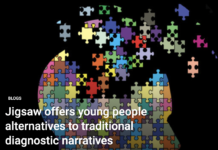Editor’s note: This article was first published on Mad in America on January 2, 2021.m
Won’t you help to sing
These songs of freedom?
‘Cause all I ever have
Redemption songs
Redemption songs
Redemption songs
The words are Bob Marley’s, the music a lilting reggae. The voice belongs to James O’Flynn, child of Ireland, as he sings them with the Claddagh Rogues.
Watch as he struts his stuff with power and joy in a clip from “An Open Door,” a documentary short about a well-being-centered community space in Skibbereen, Ireland. Listen as he mouths the words that matter to him. He sings them like he owns them — like his life depends on them, and on singing itself.
Because it does. Because he wouldn’t have made it this far without music. Because music keeps him centered, keeps him in the fight, after so many years and so many battles with his mental health and the system that confined him.
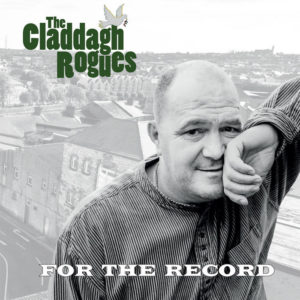
“The institutions. I was always in the institutions,” he said — hospitals, prisons. All those weeks in solitary, where all he had were the songs he made up and memorized one line at a time in his own head, songs that carried him through waves of addiction and homelessness. Singing kept him going, connected him with people, gave him a lift and led him into a new life with a band, a home, and a presence in the community. He sang, and he sang — and through song, he found a way.
“Because that’s how I found sanity,” he said. “That’s how I kept myself together. Because I love music.”
O’Flynn’s story, which he recounted in a video call from his home in Cork, is epic in its chapters and dramatic in its turns. But it is not unique in its reliance on music as a tool for recovery, the basis behind forward-thinking, research-backed wellness projects now popping up around the world.
Their school of thought: Music heals. “An Open Door” fills its 15 minutes with glimpses of such healing — people making their way in director Aoise Tutty Jackson’s airy and beautiful study of the community-fronting arts and activities hub known as 49 North Street.
Some of the lives that gather there — or gathered, in pre-COVID times, and will again — are mental-health service users. Some are not. An initiative of the Irish health services (HSE, or Health Service Executive) and Cork Kerry Community Healthcare, its offerings aren’t prescribed treatment. Its programs aren’t run by staffers with badges telling people what to do. Instead, it’s a co-production, with people from all walks taking on all sorts of roles. O’Flynn, for one, is a constant and important presence at the space, a founding contributor to its bimonthly planning group and a facilitator at music sessions.
You can see them in “An Open Door” — rocking to the music, dancing in the sunshine, standing and singing, simply being. You can see the peace and the thrill in their faces as they share.
Many of them are mental-health service users, but nothing and no one identifies them as such. No one tells anyone what to do, where to go, whether to stand and sing or sit and listen. No one asks them if they’re back after their time in hospitals, or whether and how they’re medicated, or what diagnoses they’ve had. None of that matters. What matters is the sense of community and connection, the warmth in the air and the bustling kitchen at the back. What matters is the chance to simply be in a space with people. What matters, to O’Flynn and others, is whatever brings them peace and sets them on the road to redemption. And that’s something only they can know.
Emancipate yourselves from mental slavery
None but ourselves can free our mind. . .
All I ever have
Redemption songs
O’Flynn sang Marley’s words again on his video call — reflecting on 49 North Street, on music, on song, on his past addictions, on the treatment regimen he’s now on, on all those hours trapped alone when all he had to keep him going were the songs he sang and the kicks he slammed against the wall in isolation. Like so many tales from his past, that experience became one of his Claddagh Rogues songs: “Kicking the Wall,” a jangly, catchy, waltzing track off the band’s third album that bursts with hope and human spirit.
“No matter where they put me, I always had my voice. I always had ideas in my head,” O’Flynn recalled of those days, and the singing that got him through. “All it did was help me.” And it still does.
“The way I put it,” he said, “is that if I feel sad and I want to be happy, I have my own sound. I sing, and it makes me that much happier.”
“Anything is awesome”
Music and happiness: O’Flynn isn’t alone in seeing a link between the two, and the space in Skibbereen isn’t alone in basing programs on it. Another one, the English organization Sing Your Heart Out, offers free community singing workshops for anyone, service user or not, with any level of interest. As with 49 North Street, there aren’t any sign-ups. There aren’t any lines drawn between patients and caregivers. There isn’t any pressure to achieve. They’re simply open and available for people to take or leave, to sing or be silent.
The underlying bedrock philosophy of all such programs is as powerful as it is plain: Anyone can be a part of music-making, and when they do, they’ll feel better. This isn’t a model of therapy; it’s a fact of life.
“We see people leave with a spring in their step,” said Kevin O’Shanahan, a founder of 49 North Street, a clinical nurse specialist in mental health and arts, and drummer with the Claddagh Rogues. “Because they’ve been engaged, and contributed, and maybe felt a part of something bigger than themselves for the hour or so of music.”
Agreed Declan McCarthy, acting assistant director of mental health nursing: “It’s all of us together.”
Both O’Shanahan and McCarthy work for HSE, the government sector in Ireland’s system of public and private healthcare. Their cooperation was essential in creating and cementing 49’s leadership paradigm, a non-hierarchical approach that’s open to input from all quarters. But as both of them stressed in interviews, their roles are only a piece of it; service users like O’Flynn and Rory Doody, an area “lead” for Mental Health Engagement in Cork and Kerry, are just as instrumental to the admix of voices. The usual boundaries dividing patient from caregiver dissolve in a location where everyone with an idea matters.
From the start, that was deliberate. So was its name, which doesn’t offer any hint of its association with health services. It’s simply a place for folks to gather; 49 is simply its address. The activities offered within are run in partnership among artists, health staffers, and service users themselves, all of them working together to promote not prescription-based services but wellness.
There’s the Bantry Community Choir. The “Happiness Ensemble” jam sessions. The “Open Door” open mics. The Gamelan Spréacha Geala, devoted to the music and mindfulness of Indonesia. The Ealaíon Art Group. There’s a gardening group, a hiking group, an Irish language group, a meditation and movement group. Underpinning all of them are the Five Ways to Wellbeing, a model first outlined in a 2008 study from the New Economics Foundation that went on to influence mental-health services in the UK, New Zealand, Australia and Ireland. The emphasis is clear on the West Cork mental health site, thewellbeingnetwork.ie, which promotes those five same paths to wellness: Be active. Take notice. Keep learning. Connect. Give.
“49 North Street aims to create a space, a melting pot whereby learning, therapeutic activities, creative expression and diversity can flourish,” says the initiative’s “about” page. “It’s about taking risks and building upon people’s strengths, working together to create a community where recovery and wellbeing thrive.”
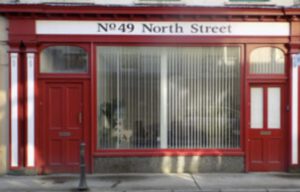
The building itself is a cheerful red storefront — an old bank, actually — on a busy, narrow street in downtown Skibbereen, just off the southwest coast of Ireland. Rented in April 2017 by HSE Adult Mental Health Services, the space hosted its first public event that July: an exhibition in collaboration with a local arts event. From there it started folding in several groups and creative efforts, the Claddagh Rogues included, that sprang from West Cork Mental Health’s annual “Feel Good Festival” and lacked a permanent home.
Right away, O’Shanahan and McCarthy worked with artists and community members, helping to bring their concepts to fruition. “We would listen to the ideas of people coming. So I became a follower rather than a leader,” McCarthy said, “but a follower in a very strategic way.”
He said he often compares it to New York City’s Orpheus Chamber Orchestra, noting that both function just fine without a designated conductor. Or think of that book, The Starfish and the Spider, Ori Brafman and Rod Beckstrom’s 2006 exploration of decentralized organizations. “You cut off an arm, it grows back,” McCarthy said. “So 49 became a place where it could function on its own. If you took out Kevin or I, it’s still going to function.”
What matters is just that: The place. The site itself, as open as a guitar’s belly, its acoustics reverberating with the people who meet there. Tutty Jackson called it “that space of improvisation, and allowing, and feeling safe, and feeling like anything is awesome, be that musical or people wanting to share, you know. And it’s really just a space where people are heard and seen.”
And in that space, O’Flynn said, “No one is better than anyone else. We all have our part to play, and we all want to play it.”
Almost like music itself.
Sing Your Heart Out
With Sing Your Heart Out (SYHO), there is no one place. Founded as a singing program in Norwich, England, and normally comprising tutor-led workshops in five locales across the county of Norfolk, the organization — an independent charity — is built on communal singing as a way forward. It boasts much the same emphases as those prioritized in the West Cork programs, exploiting music as a tool for recovery and social bonding in a decentralized, de-stressed, user-led approach.
“There is something quite extraordinary” about the program’s effect, both musically and socially, said trustee Maggie Wheeler, who was central in its founding. You could walk into any group “not knowing anyone there, not having heard any music. And in less than ten minutes, you will be part of making an amazing sound.”
“Amazing” is a word that pops up repeatedly in descriptions of the music and its effects on those who make it. And “happy,” once again. And “empowering.” “It’s a big deal to sing, I think,” said Natasha Hood, a SYHO tutor for three years and its musical director since September. “And therefore it can be very liberating and healing — and I do watch people get more confident, almost in front of my eyes. … It’s empowering, is what it is.”
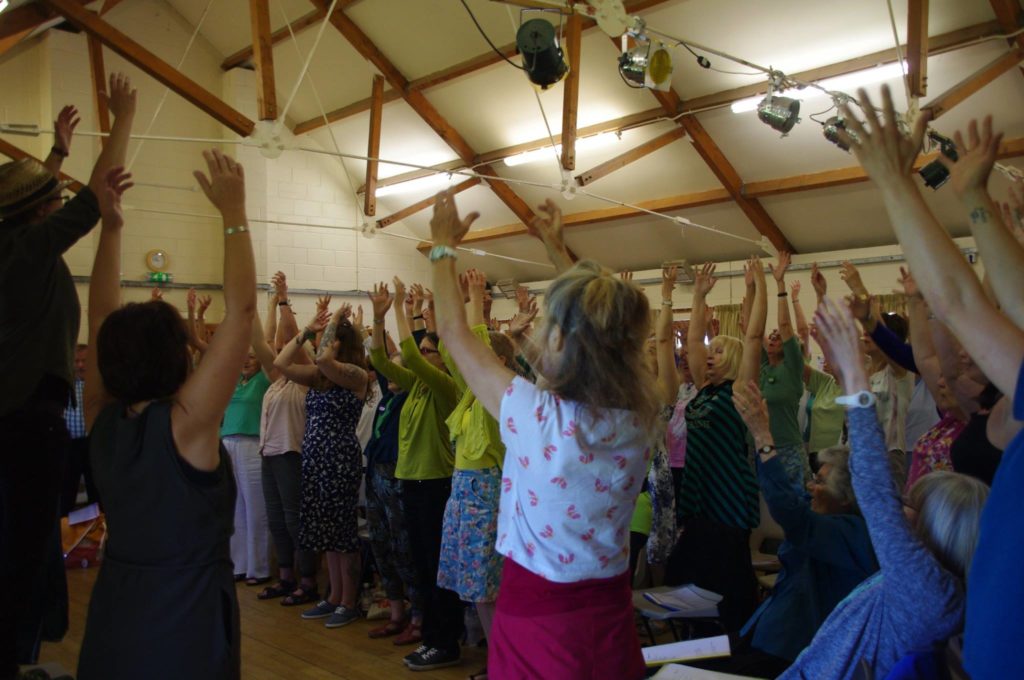
Five years ago, SYHO’s organizers commissioned a study from researchers at Norwich Medical School, hoping to evaluate and quantify its effectiveness in promoting recovery (for service users) and well-being (for everyone) in the hopes that its positive outcomes might be replicated elsewhere. The resulting paper, authored by lead researcher Tom Shakespeare, was unambiguous in its findings.
All 20 people interviewed for the study “reported positive effects on their mental health from participation in singing together.” For some, SYHO was just a piece of it; for others it was a key to recovery, “the single most important thing” in their path toward wellness. It allowed them to communicate and socialize in a safe space, building social capital and making music as amateurs minus any pressure to excel or perform. It was cooperative and inclusive, the study noted, with two-thirds of its participants in mental health services — but “no cliques, no animosity, no competition.” No stigma, either.
And, he noted, the results reinforced earlier research into the well-being benefits of arts engagement, citing one study that showed participatory choral music benefitting at-risk veterans, another showing it can help with stressful life events, and several more showing the positive effects of group singing on those with chronic conditions. Among the reams of additionally cited research was a 2014 paper out of University College Cork: The transformative potential of the arts in mental health recovery – an Irish research project, a study based on its Arts + Minds project examining the impact of arts participation for mental health service users.
All in all, Shakespeare wrote: “We conclude that the SYHO model offers a low-commitment, low-cost tool for mental health recovery within the community. . . . The SYHO experience offered a very good model for community singing as part of mental health recovery.”
Therapeutic, but not therapy
SYHO’s origin story dates back to 2005. Wheeler, then board chair for the county mental health services, got a phone call from David Juritz, lead violinist of the London Mozart Players. He told her of an old psychiatric hospital nearby that had emptied out in the late 1980s, leaving piles of sheet music in a dumpster. Long ago, probably until the 1930s or so, the music had been scored for patients and staff to sing and play instruments together. Juritz wondered if Wheeler might want it.
After “chatting away” on the horn a bit more, they resolved to form a tribute band to those long-ago players who made music together — singers and instrumentalists, patients and staffers both.
A psychotherapist she worked with, Tracy Morefield, noted that singing had always helped her in maintaining her own emotional wellbeing and supported the idea of offering a program not as music therapy — which is, Wheeler noted, an “intervention” — but as music, full stop. For SYHO, this is a foundational point. What it offers is “not a service,” Wheeler said. “It’s inherently therapeutic, but it’s not therapy.”
Morefield’s first efforts started in Hellesdon Hospital, located in a suburb of Norwich, later moving into the community and the county beyond. From the get-go, they aimed for inclusivity and a relaxed, hospitable mindset that welcomes those who come with no expectations. At each workshop, a team of volunteers welcomes all who arrive. Newcomers are asked whether their voice is high, middle, or low — not soprano, alto, or bass— and they’re directed toward a group.
But if they want to switch parts, they can switch parts. No big deal. No pressure to do anything. No need to commit or come back. No need, even, to sing in tune or memorize songs, something the program reaffirmed after an early concert caused some performance anxiety. That wasn’t the direction they wanted to go in; they didn’t want to be a choir. They only wanted to sing.
“We wanted to make coming to SYHO as easy as possible” for those who mosey in, Wheeler said. “They can turn up, sing, have your cup of tea or not, talk to someone or not, and go home.”
People who show up now and then, but don’t sing? There’s a place for them. Folks with learning difficulties and mild dementia? There’s a place for them. People who make random sounds every now and then, not quite on the beat? There’s a place for them, too. Nothing is required of anyone.
“There is no commitment,” said Penny Holden. “You can turn up and sit outside the door.”
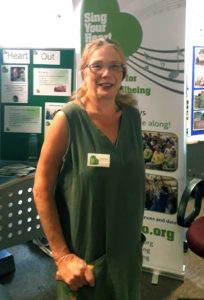
Holden wears many hats with SYHO — trustee, systems manager, longtime participant. In an email, Shakespeare introduced her as the “doyenne of Sing Your Heart Out,” and she’s been a part of it since the early days. Back then, she said, she was “well out of it.” Diagnosed as bipolar, she also has a neurological condition that affects control of her hands. But music has always mattered to her. And the opportunity to take part in singing groups was, and remains, a force for good in her life.
“Oh, crikey, I’m in a very strange position,” she said, “because music was everything to me as a child. I wanted to be a musician. . . . So any form of music-making, to me, is just bliss.”
On a Zoom call with Wheeler, Holden was bursting with energy and humor. “Hi, I’m Penny — I’m mad,” she said, laughing. The joyous old-pals vibe was evident as they gabbed at length about the program, talked up its virtues and described a trip to Tokyo to speak at a conference four years ago. Shakespeare was invited to speak; he urged them to go instead.
“My God, it was a laugh,” Wheeler said, recalling all the sights they saw, all the antics they had. “We have had some fun.”
You can’t make harmonies by yourself
With SYHO, the social component is a central and healing piece of its workshops. Shakespeare’s study noted its significance, observing each session’s all-important tea break in casually blending people from all walks of life and thus reducing stigma. Those associated with the program talk about this easygoing ritual as a low-key, high-impact component.
“We sing for a while, then we have a tea/coffee break, always with chocolate biscuits,” notes the website, syho.org. “Then we sing a bit more.”
“The tea break actually feels like an integral and important part” of the typical SYHO session, said Hood. The tiny break between singing allows people whose paths might not normally cross to chat a bit, maybe laugh a bit, and then walk away with a sense of feeling connected. “That’s as important as the singing: coming together with shared purpose,” she said. Maybe they know each other, maybe they don’t. “But people definitely are chatting with each other, and there’s a buzz. There’s a buzz in the room. It feels good.”
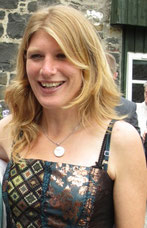
Hood, one of four voice coaches, said the work of the tutors is aimed at creating that same sense of ease. Among those who find solace at SYHO or North Street are some who, perhaps, didn’t believe they could ever make music at all. Some might have been told as children that they couldn’t sing and shouldn’t try. That music was beyond them. That they should leave it to others with skills and schooling. But the radical inclusiveness of such programs means that all are welcome, and anyone who wants to should chime in and not worry if they’re “good enough.”
With this in mind, SYHO tutors strive to make music accessible, doable, the opposite of off-putting — but at the same time, uplifting. The songbook is packed with words alone, not sheet music, so no one has to worry if they can’t read notes. Different dips and turns in the melody are conveyed with hand gestures — up for higher notes, down for lower ones.
The songs they sing are a mix of familiar and unfamiliar songs, tunes from Ireland and other parts of the world, both brand new works and folk tunes as old as the hills. They’re mostly secular and mostly simple, because simple is good. But not too simple: Harmony is essential, allowing participants to feel they’ve helped craft something out of thin air.
“Their little bit actually contributes to something very, very special,” said SYHO’s board chair, Julia Rumsby. “It’s amazing, particularly when we’re singing in person in harmony, just how wonderful it sounds. And to feel a part of that is very special.”
That’s the thing about harmony: It doesn’t happen in isolation. Singing in unison, Rumsby added, feels more like singing along with something. Singing in parts means coordination, working toward a larger, shared goal. As Hood put it: “I can’t make harmonies by myself.”
Musical vocalizing of any sort is a whole-body experience, involving the back and stomach muscles, the lungs and larynx, the rib cage and oral cavity and beyond. In normal breathing, the folds of the vocal cords are open. In song, air pressure builds against closed vocal folds that snap and ping — and the faster they snap, the higher they ping. As studies have shown, singing modulates breathing, increases oxytocin and endorphins, and along with them, feelings of happiness; group singing, meanwhile, lowers stress and arousal, and facilitates fast social bonding.
The breath expelled in song “connects you up very physically and viscerally,” Hood said, adding that it goes beyond the anatomical to levels “emotional, mental, spiritual even.” The end result: “There’s something about harmony that goes straight to my heart. Yeah. It just melts me. And I do feel it. . . . It opens me up to life.”
Penny Holden agreed. “It feels like you’re helping to build something special,” she said. “It fills you up — like, you’re much more a piece of a jigsaw that fits in, and it’s very, very satisfying.”
The power of listening
James O’Flynn grew up with music everywhere. At Christmastime, his family would sing and drink and celebrate, welcoming neighbors from up the road to join in and make music. He loved that. He loved to sing. As a teenager his life began to derail, landing him in one program and then another, then hospital and prison. But the music he heard as a boy, those sessions they sang in his home — they never left him. “Music,” he said, “was always in my life.”
The tradition of roving neighbors, dropping in for a talk or a story or a drink or a song, runs wide and deep in Ireland. The Irish term is ag scoraíocht — pronounced “scoratiching” in English, and if you can’t manage that, try “screerting” — and it remains a treasured piece of life and language in the region around Skibbereen. It’s one of the inspirations behind 49 North Street; so are the travels of American ethnomusicologist Alan Lomax, whose own roving tour through the landscape in the mid-20th century documented and preserved reams of Irish folk music.
Key to both Lomax’s recordings and the sessions on North Street, said O’Shanahan: “The idea that music made in these settings was very important. That idea that it’s not only in the concert halls we find great music. That we can find it in the most simple of locations, and the most humble of locations, and that it can be very powerful.”
It’s “back porch music,” and it matters. “That’s where the ‘Open Door,’ the music sessions, grew out of that idea — that everyone has something to contribute, and to work with us with mental health. They sit beside each other in a very comfortable way. So we’re not trying to prescribe it. And when someone comes, they don’t have to sing — which means listening itself,” he said, “can be an art form, too.”
Listening is in fact a major theme — in the programs at North Street and SYHO, and in Aoise Tutty Jackson’s films exploring same. “An Open Door” has won acclaim at film festivals and mental health conferences alike with its compassionate, clear-eyed depiction of people seeking wellness. At first, it was only going to be a three-to-five-minute film. But the more Tutty Jackson delved into it, the meatier it became. Her recently completed, 18-minute sequel, “Listen,” explores the importance of self-awareness, zeroing in on those who’ve learned from themselves in the quest for peace and joy.
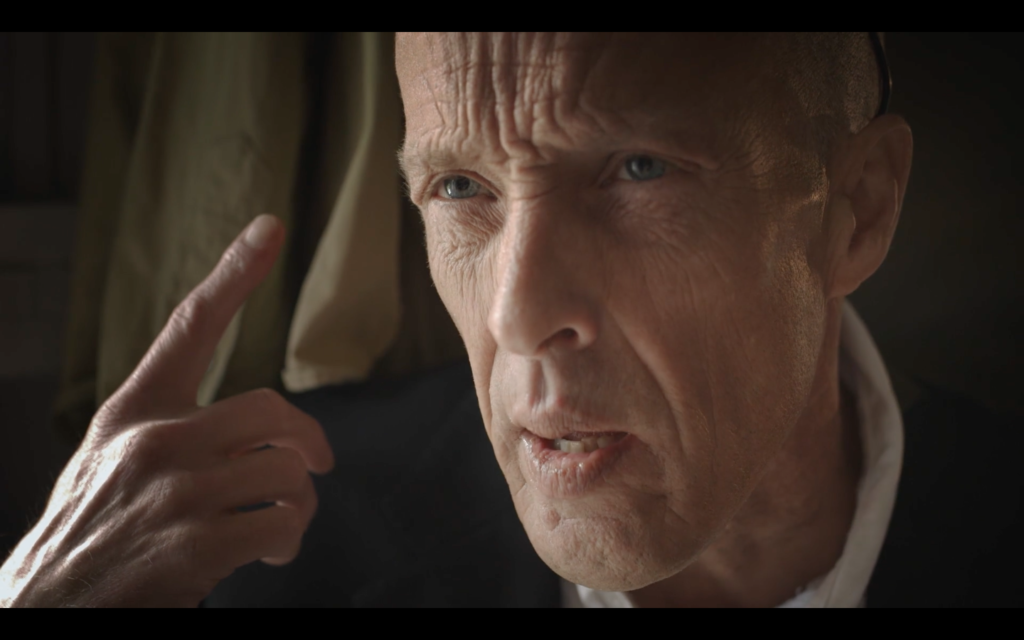
One is singer and artist Nóirín NíRiain, who provides the film’s opening quote: “Listening is a life or death experience. When we listen we live, when we don’t listen, we die.” Another is Nick Murphy, aka “Mad Nick,” who first appears in “An Open Door” and shows up in the second film as a voice of poetic wisdom and humor. We see him in a fake mustache, twirling his umbrella and dancing and leaping with joy — in short, following his own bliss. In telling his own story, he talks about his past, about alcohol, about times in his life when he didn’t listen to himself. Now he does.
Folks like Mad Nick, Tutty Jackson said: “They’ve got their shit together.” So what if they go against the grain. “They’re people who’ve really learned how to listen to themselves . . . That’s what living is all about: being true to yourself.”
Everyone is different, interviewees stressed — with different needs, different responses to treatment, different things that bring them joy. This, too, underpins both SYHO and the West Cork programs: The idea that everyone can find their own bliss, whether it’s gardening or hiking or boxing or painting or poetry. “We all have our own individual ways of getting out of ourselves,” O’Flynn said. For him it’s music. For McCarthy, inspired by his time with 49 North Street, it’s writing a book.
And everyone, no matter what their story, is the authority on their own lives.
“The lived experience,” Holden said, “makes you an expert.”
Everybody’s got a voice
Back in November, a few dozen people gathered online for a live SYHO Zoom, popping into a regular Wednesday session. It wasn’t the same as singing in person — not with the inevitable latency, and not with participants muted as they sang. All they could hear, once the music began, were the tutors and their own voices. Unmuting everyone would be aural chaos given the audio lag, more like some polyrhythmic avant-garde piece than three-part harmony in four-four time. But with the dangers of singing in the midst of a pandemic, virtual sessions are all they have for now. And the session, for all its drawbacks, bounced with joy.
“All we can do is smile and keep singing,” said one of the participants in the minutes before start time, as folks were hopping on and catching up.
They all said their hellos — “Hi, darling, so glad you made it” — “I’m gonna multitask, do my dusting at the same time” — and showed off their bright-yellow hats and scarves to celebrate a nearby lemon festival.
“If somebody wants to come around with the gin, I’ve got lemons,” Wheeler said, brandishing three.
A few minutes later, the participants were muted and the singing began. The SYHO tutors for the session, Kimberley Moore and Johanna (Joey) Herron, led the group in warmups. Stretches ensued, then yawns and shoulder wiggles and face massages. Upbeat chants. “I am a-MAAAAZING. Can you have a go at that? I am amAAAAzing. A little bit higher. I am a maaaazing.”
And then the music-making began. First came a song of fall that Herron had written that morning: Autumn leaves are falling / Autumn, she is calling. Then came a song of unity: Everybody’s got a voice, let’s use it / Everybody’s living in this world / One heart beating.
After that, a song about love. Joey sang the first part: We hold you in our circle, we hold you in our love. Kim sang the second part, same words, a bit higher. A third part, the lowest of all, played on a recording.
All watching from afar could choose any of the parts — whatever suited them — and sing along as the tune, simple but uplifting, layered its harmonies over Kim’s punchy chords on guitar. Participants nodded and smiled and sang along, their sound on mute and their video lagging. But it didn’t matter. It was infectious.
A hint to anyone who might want to click onto such sessions and silently observe: You can’t. Not without singing along, and not without feeling just a little lighter in the process. I was banging out notes on the computer while watching, and I still couldn’t keep my mouth shut for the duration. The music sung by the tutors, the sight of others energized and grinning with joy, and the insistent pull of harmonies that weave together sound with simple beauty — all of that is frankly irresistible.
“It’s contagious, isn’t it?” Hood asked. And indeed it is. Singing is a blast. It lifts your spirits and zings you awake. It’s that simple.
At session’s end, a handful of participants remained on the Zoom to answer a few questions. One of them was about as basic as it gets: How do you feel when you’re singing?
“Connected,” said Harriet Micklewright, Zooming from Japan.
“Uplifted. . . Alive!” said Holden.
“Energized,” Micklewright added.
“It’s such fun, isn’t it?” said Jenny Ford. “It’s enjoyable. It’s nice to see everyone.”
And one more thing, they said: Making music seizes the whole of your attention, elbowing any worries to the sidelines. “When you’re singing, it helps you forget everything else. . . . I think it’s to give people an anchor and something they know they’ll enjoy,” said Kate Wood. “And it’s carefree.”
“It gives you a focus,” said Julia Rumsby. “It gives you a focus.”
All equals in the room
There’s a moment, about halfway through “An Open Door,” when Peter Fitzgerald — who founded and leads the Happiness Ensemble — articulates another piece of 49’s bedrock philosophy.
“I wanted everybody to leave their labels at the door. For everybody to come in and go, ‘Right, we’re musicians.’” Whether they were longtime professionals or service users, “It didn’t matter,” he says. “You were a musician in a room.”
At 49 North Street, participants in its varied creativity and community programs are just that: participants. The singers and musicians in its choir and jams are singers and musicians in choirs and jams. As with SYHO, they’re not patients in a music-therapy program led by caregivers; they’re people making music, whether they happen to be in treatment somewhere or community members wandering in off the sidewalk at its storefront digs. In “An Open Door,” clips of its musical gatherings pulse with rhythm and song, the fellowship crafted among them as obvious as the beat.
“It really is just a space where people are welcome,” O’Shanahan said.
Maybe some of those people are back home after time spent in treatment, and they just want to feel like part of the community. The Irish Health Services’ emphasis on wellbeing underscores the role of positive, community-facing spaces on the path to recovery, and a place like 49 North Street can be a “next step” on the journey. The fact that nothing tags them as anything but human — no badge, no prescription, no documentation or case history — means they can engage on the same plane.
“I like the seeing of myself as level with everyone else. I’m not above no one. I’m not below no one. . . . I clap, I sing along, I join along,” O’Flynn said, adding: “It’s important that when we’re in the Open Door, everyone is relaxed around everyone else. Because everyone has to be made to feel at home.”
That’s how it feels to O’Flynn, who was living in a homeless shelter when he first met O’Shanahan and they first banged out his songs in a drum circle. From that sprang the Claddagh Rogues, formed with the late vocalist Mags Kelly and a brew of other musical collaborators — initially, as a project at Cork’s Simon Community. That was in 2007. Ten years later, 49 North Street was born.
The upshot at 49, said the songwriter: “Feeling heard. Feeling wanted. . . and caring. Caring for others, and other people knowing that they’re wanted, that they’re loved, that we love and respect one another.”
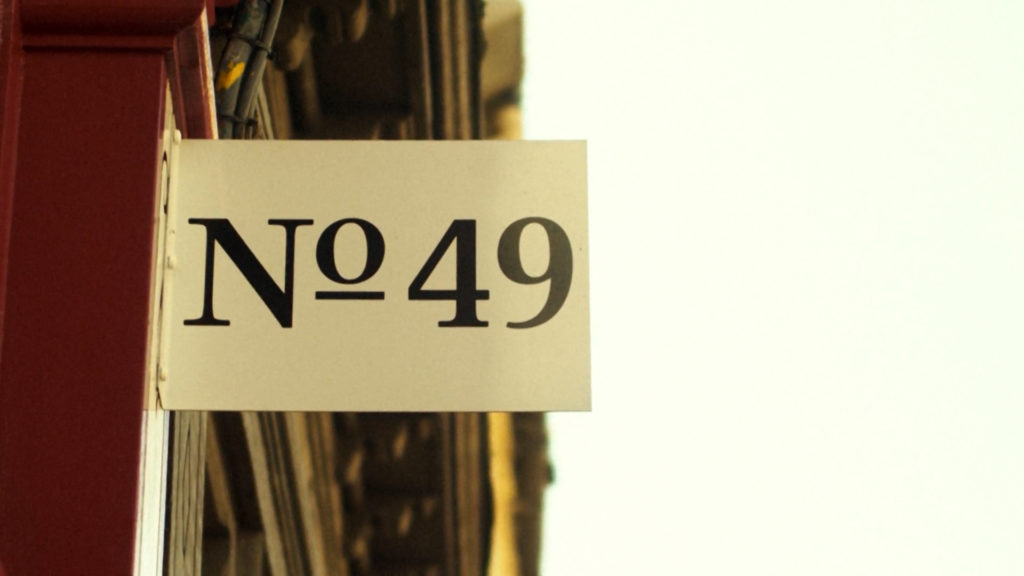
O’Flynn recalls a time, not so long ago, when the relationship between patient and caregivers was more lopsided — “‘Do that, don’t do this, don’t do that.’ Nowadays, it’s like, ‘What’s your view on it, James?’”
O’Shanahan and McCarthy both observed and echoed this shift in attitude and service. The latter recalled driving around Ireland back in 2014 with a colleague, working on a report. At each stop, they talked with people, asking them what worked, what didn’t, what they wanted. When he walks into 49 North Street, he said, it’s the same. He’s not there to direct. He’s there to listen.
In a sense, it’s just like music. That hadn’t occurred to him before — the idea that music is as much silence as it is sound, as much about listening to others as singing or playing yourself. Nor had the musical analogy with his own work struck him until just then. But it reminds him of the Native American imperative on listening to the Earth, he said, and it serves as a lesson in mindfulness. The emphasis on understanding, on dissolving the boundaries between patients and caregivers, on piping down and paying attention to people’s needs and desires: “It is a new paradigm.” And it works.
“Why it works is a synergy, a kind of alchemy, of the people,” McCarthy said. His words, evoking an almost mystical collaborative stew, are echoed in the draft of an upcoming paper (for the Mental Health Review Journal) that tracks the history and philosophy of 49 North Street. From the start, he said, the goal was “a person-centered culture whereby we would see beyond diagnoses.”
SYHO sees beyond them, too. “We always say, ‘Everybody’s equal,’” Holden said. If someone shows up with a badge pinned to their chest, they’re asked to take it off. “Because everyone’s equal in the room.”
Workshops are user-led, involving many service users in volunteer roles — but, again, only if they want to. “Because maybe getting out of bed and singing is about all you can manage that day,” Wheeler said. Maybe someone, at some point, might be asked to wash a few mugs. For Holden, it was that day she helped moved chairs into a circle — “and that,” she said, “was my fatal mistake.”
Steppingstones on the journey
The whole point of the well-being approach to health care, mental health included, is not to wave the magic wand and eliminate all pain. It’s about feeling better. It’s about getting through the day.
“It’s recovery,” Holden said. “It’s recovery. It is getting better.” She’s been bipolar as far back as she can trace, she said, ever since she was a toddler. “I know what my problems are. I can deal with them. I have a toolbox that I can use. . . so that’s the objective in mental health, isn’t it, these days? Isn’t it, Maggie?” Via Zoom, her friend agreed.
“It’s about doing what you can do,” Wheeler said — for yourself, and for other people. SYHO is reaching some who need to be reached. It’s improving their lives a little bit — and little isn’t nothing. As Holden said: “Yeah, we can only do little things, but we can do little things that count.” And over time, “Lots of little things become big, if you put them together.”
In his study, Shakespeare noted the initiative’s alignment with the recovery approach and the core elements of “CHIME,” which has gained traction in Britain and Ireland both: “connectedness; hope; identity; meaning in life; and empowerment.” It isn’t about fixing everything. It’s about finding a way.
Holden thinks of SYHO as a steppingstone on the recovery path — not a final destination. “We don’t expect people to come forever. We’re just part of the journey.” Holden and Wheeler spoke of a professional musician who, navigating a difficult phase in her mental health, found some solace with SYHO for a while and then returned to her career. People come and go, just as they come and go at 49 North Street.
Declan McCarthy, deploying a metaphor from classic American sitcoms, talks about Cheers and Friends. “You know, sometimes you want to go where everybody knows your name,” he said, a reference to the former. But, no, 49 is not a pub. It’s not a cafe. “And don’t even call us a mental health place. We’re a place,” he said.
That word again.
McCarthy has expressed himself in that space at times, taking off his “assistant director’s hat” and “defrocking” — simply letting himself be Declan, a human being in a space with other human beings. Because that’s the nature of 49 North Street, he said — as “a very safe place for people to be themselves and not be judged.”
This is yet another part of that bedrock philosophy underscoring SYHO, West Cork, and similar programs. Some might have diagnoses, some not, but none of that matters in a space like 49. And mental health isn’t binary. It isn’t something that some folks need to address and some folks don’t. “Rubbish!” Holden said. “Because we all have mental health. Because everybody has good, indifferent, bad, variable.”
“Mental health,” O’Shanahan agreed, “is everyone’s business.” Or, as McCarthy phrased it: “Everyone has a narrative.” Or Tutty Jackson: “Everyone kind of has his own journey.”
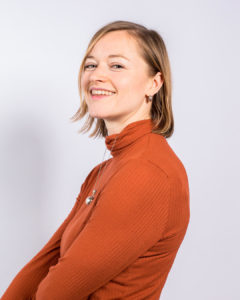
She went through her own journey while working on both films, she said — including a paradoxically timed ear infection “when I’m making a film about listening!” And she had never really made music before she first took a seat at the Happiness Ensemble and hummed out a few notes. She didn’t sing, exactly. But the music was in there, tapping to get out, and that was a startling discovery — “to find this voice inside me.” She felt an openness and acceptance during her first visits at 49, a sense that it was safe to express herself.
Then, late last year, she sang a couple of tunes at a song circle while visiting a friend in Ibiza.
“For me, yes, that power of singing and music on my own journey has just grown exponentially,” said the filmmaker, who now has plans for a feature-length version of “Listen.” “And I really can’t tell you how powerful that’s been for me on a personal level the past two years.”
Also powerful: finding her views on mental health challenged and changed in a room without divisions. Growing up, “I didn’t have anyone super close to me in my family or in my circle that had a serious mental-health issue. . . . I just wasn’t around that. So probably I just had an innate (habit), from the way I was brought up, of putting people in boxes until I got involved in 49 North Street.”
That’s where she realized: There are no boxes. Or there shouldn’t be.
Transformations
The journeys of some are more dramatic than others — moving out of the darkness, be it addiction or despair, and into the light of rewarding lives.
Asked whether they had seen such transformations in action, Holden and Wheeler didn’t miss a beat.
“Here I am,” Holden announced.
“Our poster girl,” Wheeler confirmed.
Sing Your Heart Out, Holden continued, has “taken me from being practically a basket case to being a stropping person that you can’t shut up. And it’s done it with other people that have been on similar journeys.”
“We have had situations with people where it’s literally saved their lives,” echoed Rumsby after the Zoom workshop.
Literally saved their lives.
Shakespeare said as much in his study, quoting participants who described the singing workshops as critical to their recovery. “Without SYHO I wouldn’t be here, I wouldn’t have managed,” said one. “‘SYHO saved my sanity that year,” said another. Yet another called it “a life saver.”
That sentiment, and the exact language expressing it, are duplicated at 49 North Street, where music has lifted many from the depths. In “An Open Door,” a young man states it bluntly: “I’d be lost. Music has literally saved my life. I mean, I was on the verge of suicide at one point. I battled alcoholism. I battled all these things. The music has literally saved me.”
And then there’s James O’Flynn. Not so long ago, he had nothing. Life battered him. His stays in institutions battered him. Alcohol, drugs, cigarettes battered him. Getting prepared for a discharge at one point, he didn’t have an address to return to. Now he has a two-bedroom home in Cork, just five minutes down the road from his mother. He has a 7-year-old son, going on 8, whose framed photo hangs behind him in the sunshine on a WhatsApp call late last year.
“That’s my life now,” he said.
He gestured out the window. The wood pigeons, the sparrows, the robins — the noise that they make. It’s all sound, he said, and all sound is music. “Music is everywhere to me.”
These days he has his own part to play, his own responsibilities to honor. He has three records under his belt, a bandcamp page with the latest album, a circle of friends to collaborate with, and his spot fronting a band that plays with oomph and joy. And, with 49 North Street, he has a space where he feels welcome and helpful.

“And down there,” he said, “I learned about respect and disciplining myself, and self-respect. . . . I went from the worst case to the success case.”
So what if he’s not out there touring the world with a pack of bodyguards, he said. So what if he’s not making millions. He’s singing his songs, he’s telling his story, he’s helping people in difficult situations not unlike his own just a few years back.
“I’m not famous. I’m just meself. . . I’m just meself,” he said. “The music comes from here.”
And that is, after all, the point.
Peace, peace, peace
O’Flynn has been busy during COVID, collaborating on Soundcloud music that he posts on Facebook. So have the forces behind 49 North Street and the Wellbeing Network, which mounted a virtual edition of its annual Feel Good Festival in October. As with SYHO, the pandemic means no physical music-making, at least for now. And, as with SYHO, it’s been hard bordering on impossible for organizers to keep track of those who normally engage. Lots of folks are off the radar, and because neither program keeps files or any personal info on those who come — there’s no checking in, no signing up— no one can know how everyone is doing.
“The COVID pandemic is particularly showing us all how dependent we are on each other,” O’Shanahan said, especially given its effects on mental health. “No one is immune, you know.”
Hood worries about SYHO’s participants, especially those who aren’t computer literate. “It feels a bit heartbreaking that the people that need us most, we’re not able to reach.”
But the program keeps plugging ahead with its regular Zoom sessions. Each one offers a gallery of muted faces, maybe slightly out of sync, but grinning and nodding and singing along to tutors at a remove. Like their counterparts in Ireland, the SYHO cohort are embodying something bigger than themselves, an inclusive model of therapeutic music-making that both builds community and, hopefully, stretches beyond it.
Already people like Micklewright in Japan are dropping in on Zoom sessions from afar. Already someone in Tasmania has expressed interest in what they do. They want to go global, Holden said. In a sense, they already are.
“It’s happening,” she added. “It’s happening.”
In the meantime, for SYHO and North Street both, the takeaway and goal remain the same. For all the arguments in favor, for all the discussions unpacking the facets and complexities of mental health, for all the citations noting reams of research, it all comes back to one plain, powerful, formative concept.
“I think it is about joy,” Wheeler said, “and it is about pleasure, and it’s about the pleasure that comes from a lovely song — and doing that with other people. And being part of something.”
And Holden? What does singing mean for her? “A joy,” she said. “A joy and a laugh.”
In describing what he sees at 49 North Street, O’Flynn said: “Hope. Hope. Hope for a better future. Not only for myself, but for the people who come in there. I see them smiling, you know,” he said. “I see them happy.”
Among the videos on the SYHO YouTube channel is a Disability Pride upload from a few months back that includes a song led by Natasha Hood. It’s based on an ancient Hindu prayer — in Sanskrit, the mantra is lokah samastah sukhino bhavantu. In English: May all beings be happy.
Hood often uses it to end a session. “I like sending people out on that lovely note,” she said. The song is simple but not too simple, spiritual but not religious, encapsulating the message of well-being that has shaped and inspired SYHO from the beginning.
In the video, she stands in a sunny patch with a tree behind her and leads her viewers through the parts. Smiling and swaying to the beat, she lifts her hands for high notes, drops them for low notes, and moves her flattened palm across for long ones.
She sings:
May all beings be well
May all beings be happy
Peace, peace, peace.
And again — as always — it is impossible not to sing along.
***
Editor’s note: This is the first of a three-part series on music and its impact on well-being. Part two reports on the science of why music is so healing, and part three tells of how cultures may rely on music to nurture social well-being.
MIA Reports are supported, in part, by a grant from the Open Society Foundations
